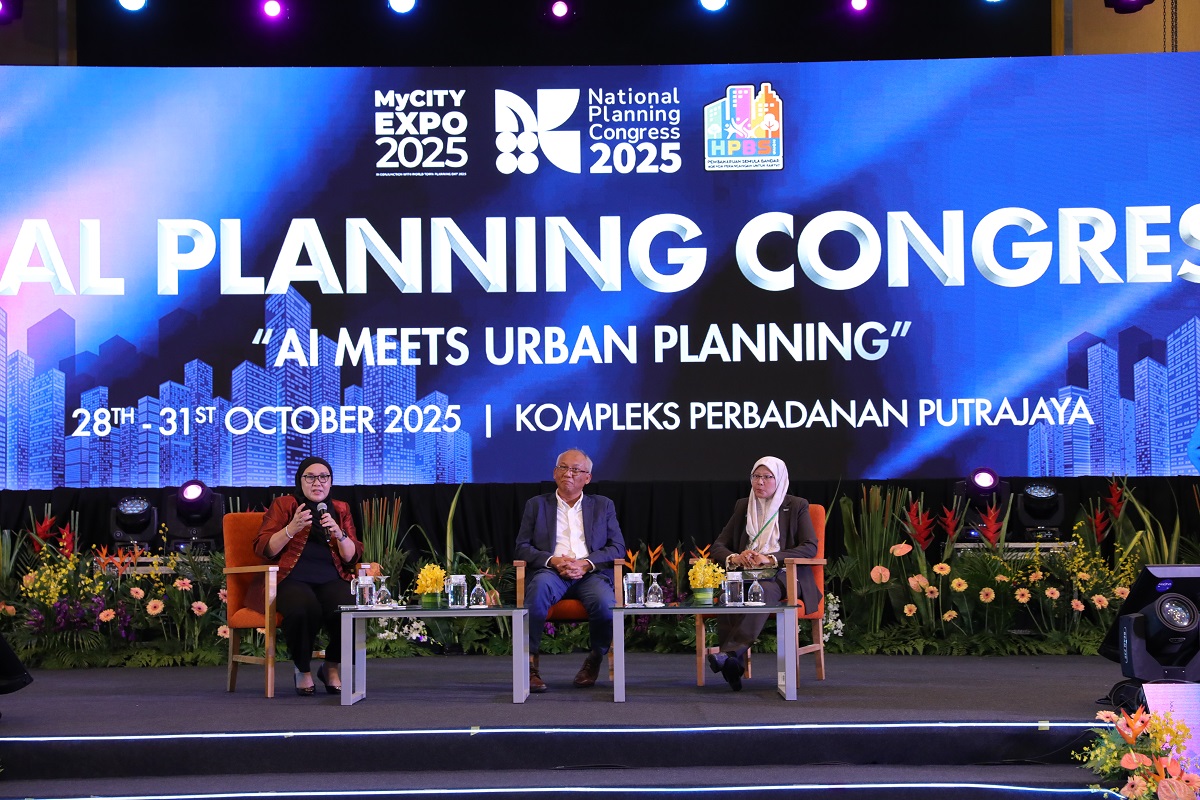
- “Mobility, emissions, and population data exist, but they’re scattered and not easily accessible. Without integrated data, it’s difficult to plan efficiently,” said Norhasliza.
PUTRAJAYA (Oct 30): Malaysia’s momentum towards smarter, data-driven cities is growing, but data collection and management remain inefficient.
Malaysian Green Technology and Climate Change Corporation (MGTC) Climate Action Division senior director Norhasliza Mohd Mokhtar said this during her session on Wednesday at the National Planning Congress (NPC) 2025, held at Kompleks Perbadanan Putrajaya.
“Mobility, emissions, and population data exist, but they’re scattered and not easily accessible. Without integrated data, it’s difficult to plan efficiently,” she pointed out.
She said artificial intelligence (AI) could help bridge these gaps by making urban planning more precise and responsive.
“With the right AI tools, we can process data faster, generate insights and make better planning decisions that directly benefit communities,” Norhasliza said.
She added sustainable city planning should maintain a close relationship with nature.
“Development shouldn’t come at the expense of the environment. Our love for nature should be reflected in how we design cities and plan communities,” she said.
AI can improve asset management
Putrajaya Holdings Sdn Bhd senior general manager Hassan Ramadi concurred, saying AI can play a bigger role in improving how local authorities and developers manage urban assets.
“AI can help keep consistent records and track the condition of each unit. We can see what’s changed after a year and monitor maintenance more effectively,” he said in his presentation titled “Urban Renewal and Regenerative Cities through AI Innovation”.
Hassan said one of the biggest challenges now is ensuring that government frameworks actually support these technologies in real-world conditions.
“It’s not just about having policies or plans on paper. We need tools that allow data to be updated, processed and acted on quickly, so decisions are based on real, current information,” he said.
He also highlighted, as AI tools become more common in safety and visual recognition systems, privacy will be a growing concern.
“These technologies are useful, but people don’t want to feel constantly monitored. We need to find a balance between security and personal privacy, especially in residential areas,” he said.
URA must be read in entirety
In his presentation, “Transforming Our Cities for a Better Urban Future”, Universiti Teknologi Mara (UiTM) Shah Alam former deputy vice-chancellor Professor TPr Dr Jamalunlaili Abdullah said the public needs to first understand the Urban Redevelopment Act (URA) and its implications.
“Some people may not have read the details. Even I had to reread the URA to fully understand what’s inside,” he said.
Jamalunlaili said there are misconceptions about power being concentrated in the hands of the minister, but the URA actually reflects shared representation between federal and state authorities.
He said many cases serve as reminders of why urban renewal must protect existing communities.
“We’ve seen how people get displaced when they can’t afford to stay in their own neighbourhoods. That’s something we should prevent.
“When we talk about urban planning, it’s important to remember that development should be for the people. Meaningful engagement with the community should happen before decisions are made,” Jamalunlaili added.
Urban renewal through legal and constitutional balance
Town and Country Planning Department (PLANMalaysia) Planning Legislation and Regulatory Division director TPr Zamirzan Puji said housing and urban redevelopment must be viewed through the lens of constitutional rights and public interest.
“In Malaysia, issues of urban planning and safety fall under the Federal Constitution, where authority and power are shared between various levels of government,” he said.
Zamirzan added that one of the main challenges in addressing urban decay is ensuring that redevelopment initiatives are necessary, proportionate and rational.
“For instance, when dealing with dilapidated or deteriorating city areas, the government’s role must be clearly defined. Intervention should protect public interest while ensuring property owners are treated fairly,” he said.
NPC 2025 is organised by the Malaysian Institute of Planners, with EdgeProp Malaysia as media partner. Over three days from Oct 28–30, it is set to bring together about 800 participants, including policymakers, urban planners, industry players and community groups.
Themed “AI Meets Urban Planning”, it aims to promote dialogue and innovation in urban renewal, city planning and the role of technology in building better, more liveable towns and cities.
The event, held in conjunction with the national celebration of World Town Planning Day which also includes the MyCITY Expo 2025 until Oct 31 was officiated by Deputy Prime Minister Datuk Seri Fadillah Yusof and attended by Housing and Local Government Minister Nga Kor Ming on Tuesday.
Read also
NPC 2025: Real city transformation is not just AI adoption, but human-centricity
As Penang girds itself towards the last lap of its Penang2030 vision, check out how the residential segment is keeping pace in EdgeProp’s special report: PENANG Investing Towards 2030.






